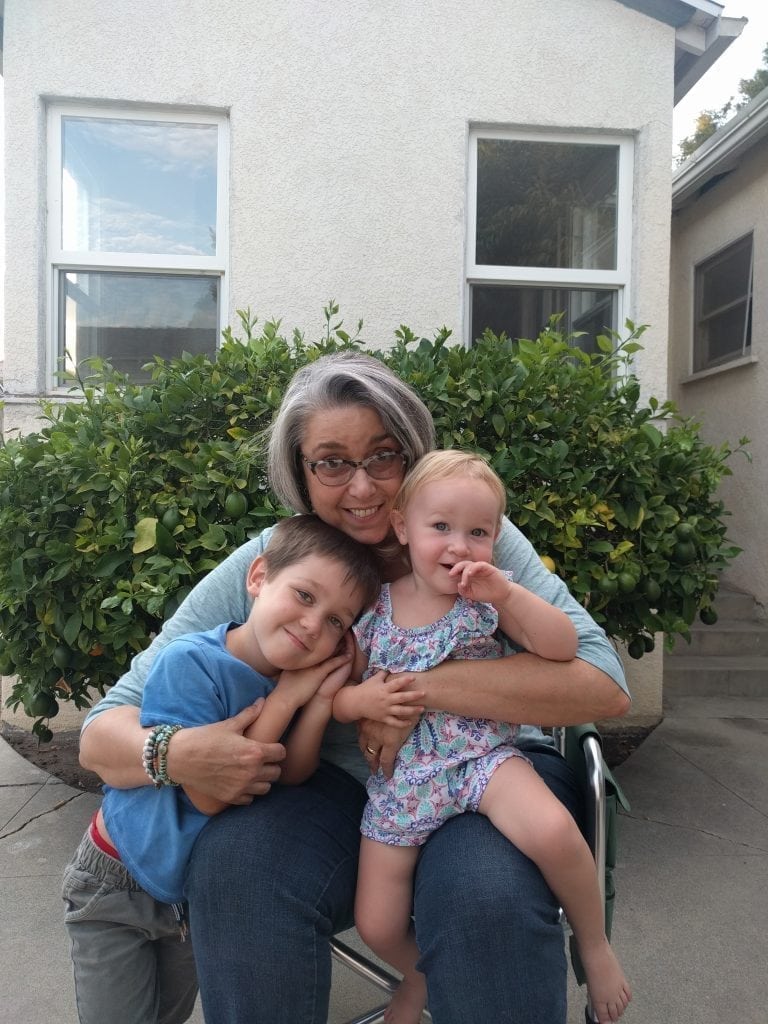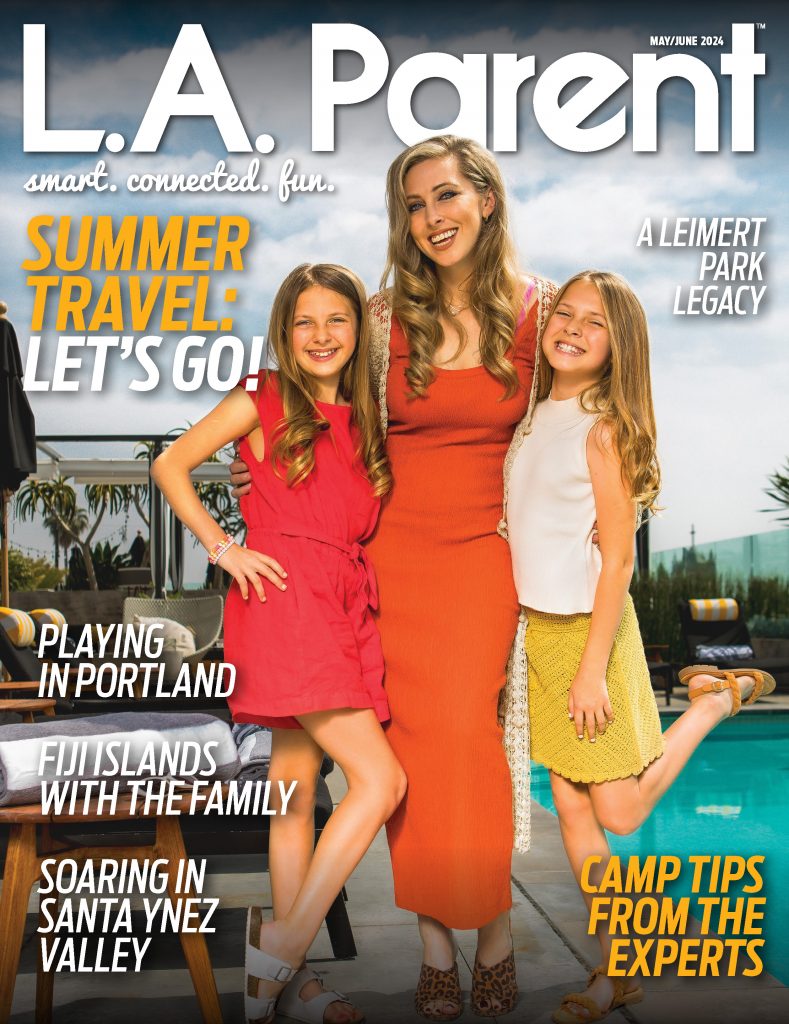
Robyn Stack Reagan, pictured here with her grandchildren, is program director of Circle of Friends – The Path to Inclusion. PHOTO COURTESY ROBYN STACK REAGAN
Robyn Stack Reagan, program director of Circle of Friends – The Path to Inclusion, is mother to two adult children and has two grandchildren, one of whom just started kindergarten at the elementary school Reagan’s daughter, Ashton, attended. That first day of school brought back memories for Reagan.
When Ashton started kindergarten in the 90s, she would not speak in class, had trouble making friends and was bullied. The family eventually learned that she suffered from a social phobia and worked to get her the help she needed. By third grade, things were better. By high school, Ashton was playing the flute, traveled to London and marched in the Rose Parade.
Reagan, who has worked in special education for more than 20 years, oversees and supports professional development for facilitators who train school personnel at Circle of Friends, a nonprofit dedicated to providing inclusion for students with disabilities on school campuses. The organization, originally founded at Santa Monica High School, contracts with schools for three years, offering multiple workshops and stressing school ownership of the mission so that the culture of inclusivity is sustainable. Local chapters can be found in the Los Angeles Unified, Newhall and Santa Monica-Malibu school districts.
Tell us why you became involved in Circle of Friends.
When I learned about this program, I knew it was right for me because they take the time with kids [with disabilities] who don’t have the skills to make friends easily. Circle of Friends also creates an opportunity for students who are nondisabled to learn that those who are disabled are not that different. When they are in our program, the kids truly get to know each other and they want to spend time together. We call them “peer friends.”
How does Circle of Friends work?
We work with districts all over the country – mostly in California, plus five other states. Peer friends are developing advocacy and compassion. They are future leaders and friends, and implementing this program at schools improves school culture. Goodness knows, in our current national situation, we need to make things better whenever we can. We need to tap into their natural goodness. Kindness is contagious.
We work with elementary through high school students. The elementary students are supervised throughout the program by teachers and therapists who serve as advisors. The high school students receive training, but the goal is that kids are committing to spending time with each other, for example during lunch.
How do you ensure that kids without disabilities show understanding, but not pity?
We talk about how something like this looks good on a college resume. But if it’s community service, it should be community service for everyone, including the student with the special need. They’re teaching you, too. The focus is that we’re both learning. It is definitely a two-way street.
Tell us about your anti-bullying focus.
“Bully” and “victim” – I don’t really care for those terms. We like to say a kid is being targeted. All behavior is communication. Something is going on with the bully as well, and it needs to be attended to. We can’t just vilify the bully. We train students to be upstanders instead of bystanders. Bullying mostly happens with witnesses, because that’s where the power comes from. If the upstanders stepped up, those numbers would go down, but that’s also a vulnerable position.
We tell kids, “Know the kid. Have genuine connections.”
Learn more about Circle of Friends at www.circleofriends.org.

























